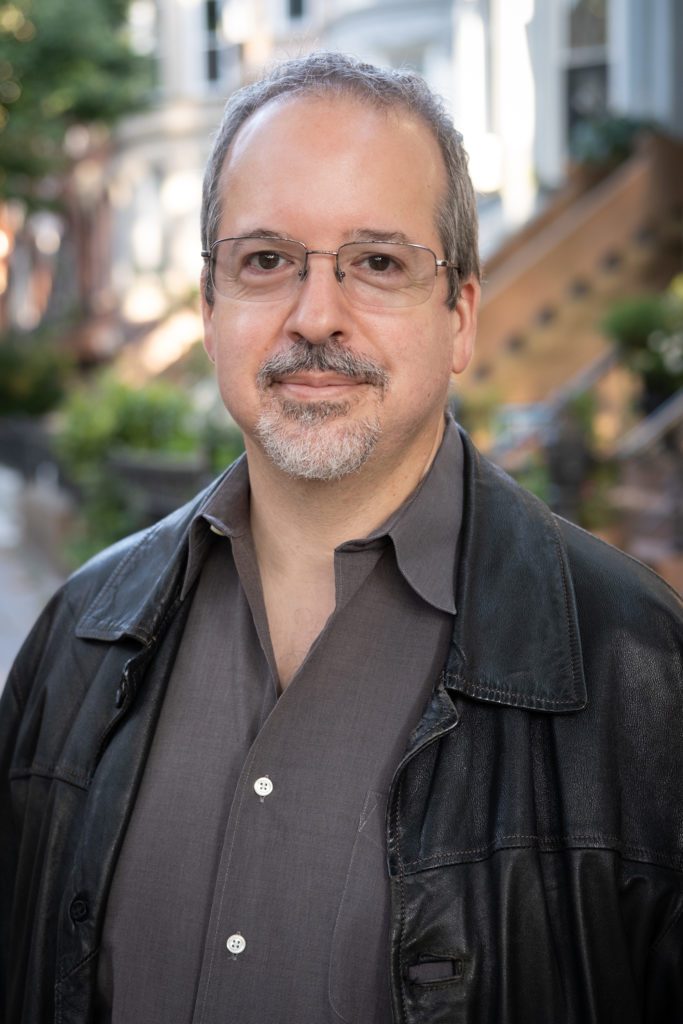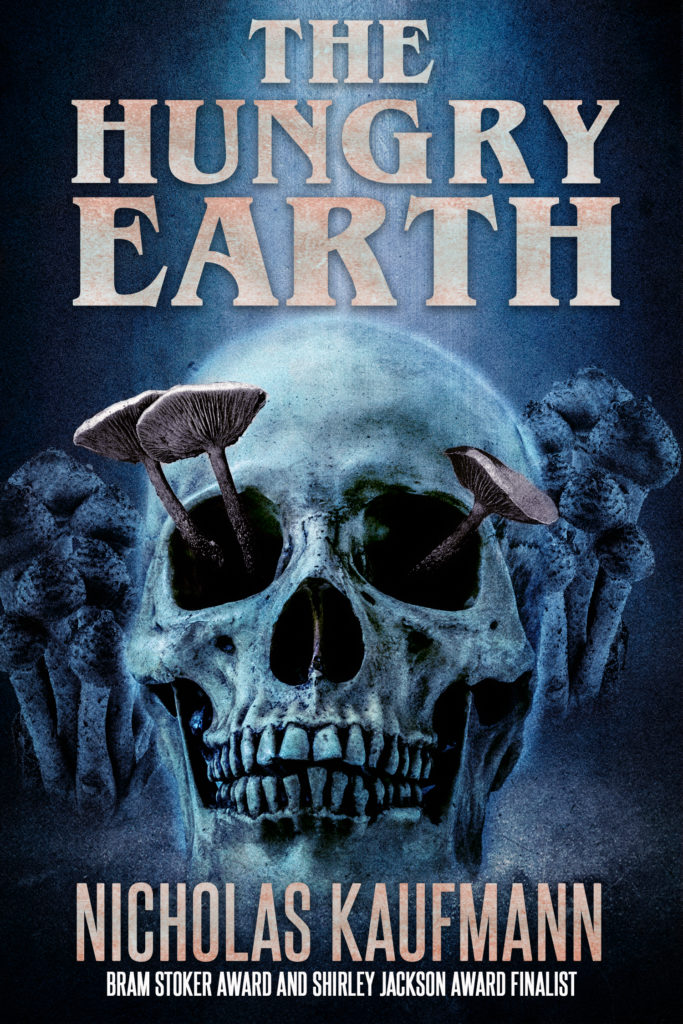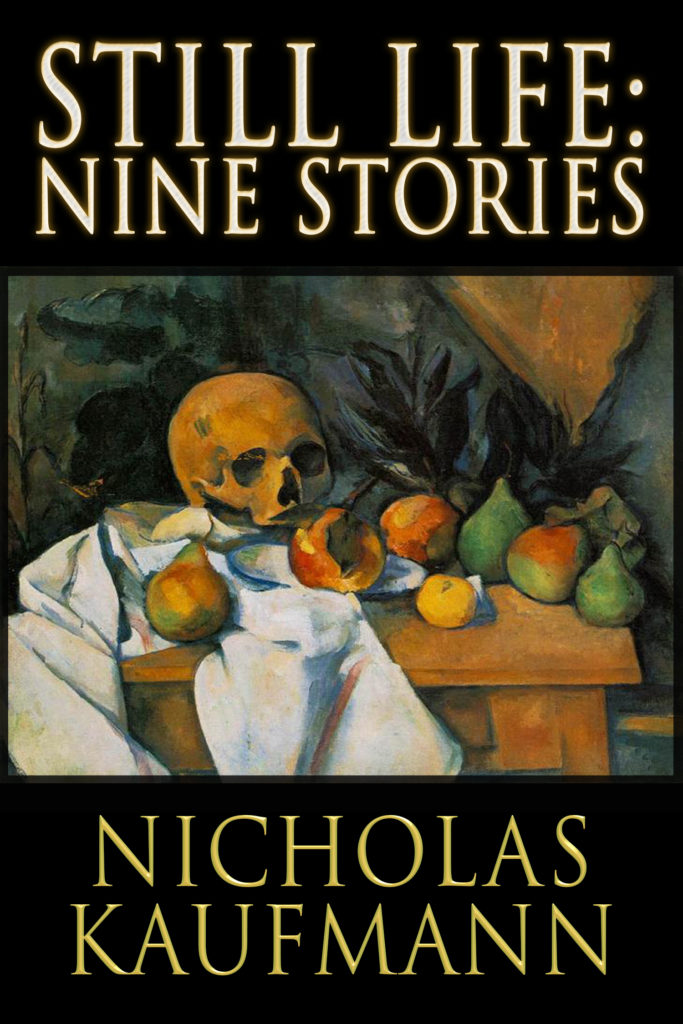10.5.21 13 Questions for Author Nicholas Kaufmann, Author of “The Hungry Earth”
 Ever since I started reading Nicholas Kaufmann’s stories — and later, his books — I’ve been a fan: He weaves together a clever blend of horror, fantasy and suspense in which things often go very badly for his characters, but that’s an excellent thing for us readers.
Ever since I started reading Nicholas Kaufmann’s stories — and later, his books — I’ve been a fan: He weaves together a clever blend of horror, fantasy and suspense in which things often go very badly for his characters, but that’s an excellent thing for us readers.
As the author of seven novels and two short story collections, Nick’s last novel, 100 Fathoms Below, was co-written with Steven L. Kent and became an Amazon best seller. He’s also been nominated for the Bram Stoker Award and the Shirley Jackson Award, among others. You can find his short fiction in publications like Cemetery Dance, Black Static, Nightmare Magazine, Interzone, and more.
Nick and I first met on a panel about dragons at Readercon, and have since become good friends. (I even trust him to hang out with us while throwing hatchets, which we did together recently.) I’m thrilled that he has a new book out, the out-of-control fungus thriller The Hungry Earth, in part because it allows me to call him a fun-guy and also because I can help share it with the world. And if thrillers full of body horror are your thing, you’ll want to serve this up posthaste!
I asked Nick to answer 13 questions for my blog so you can get to know him as well (or nearly as well) as I do. And if you get a chance to hear him read, check it out — he’s a terrific narrator, with a hilarious laugh. The Hungry Earth comes out today, so go grab your copy (links below)!
Are you eating mushrooms right now? If not, why not?
I love mushrooms, especially on pizza! However, after reading up on fungi for The Hungry Earth and learning how complex these ancient, incredible organisms are my appreciation for them changed and grew. One thing that really stuck out to me, and made me reconsider eating mushrooms anymore is the fact that the genetic composition of fungi is more similar to humans than to plants.
Fungi and humans share certain proteins that plants don’t. On top of that, fungi breathe in oxygen and breathe out carbon dioxide, which is the opposite of what plants do, but the same as what animals like us do. Some think this is because fungi and animals shared a common ancestor once, back in the misty reaches of time, and although we belong to separate kingdoms, fungi and humans are actually close relatives. Anyway, I may just stick with pepperoni on my pizzas from now on!
You seem to go all in when your book has a particular focus – dragons for Chasing the Dragons, now it’s fungi for The Hungry Earth. What excited you about mushrooms and spores and all that, enough to write a book?
Did you know that fungi are limitless and essentially immortal networks of subterranean filaments with no brain or central nervous system, and yet have their own form of intelligence? Neither did I, not until I read a book called Entangled Life: How Fungi Make Our Worlds, Change Our Minds & Shape Our Futures by Merlin Sheldrake (which has to be the best name I’ve ever heard). I learned so much about fungi and fungal intelligence that I knew I absolutely had to do something with it.
For millions of years, fungi have been controlling, manipulating, and even farming insects, and it wasn’t much of a jump to wonder what would happen if fungi turned their attention to human beings next. I didn’t even have to make up the science, which is the truly scary part. Nothing that happens in the novel is beyond the realm of possibility.
In brief, what’s The Hungry Earth about?
The Hungry Earth follows Dr. Laura Powell, the medical examiner of the small city of Sakima in the Hudson Valley, who is called in to perform an autopsy on a high school student who was found dead under odd circumstances. During the procedure, she discovers a strange substance growing throughout the inside of the corpse that she can’t identify, so she calls in her scientist ex-boyfriend, Booker Coates, to help.
Horrible things ensue as more and more townspeople become infected by this substance and turn violent, hunting down anyone who hasn’t been infected yet, all in the service of something they call the God of Dirt. At the same time, Laura and Booker may not be as over their relationship as they thought, so there’s an element of romance to the novel as well.
It’s the first in a series – do you have the other ones plotted out, or know where they’re going? How far ahead do you project when you want to carry a story onward?
It’s funny, I originally wrote The Hungry Earth as a standalone novel, but when I was discussing what to write next with my agent, we kept returning to the idea of using Laura as the protagonist again. It made a lot of sense, so I guess you could call it an accidental series. Each book will have a standalone story, but the interpersonal relationships of the recurring characters—Laura, Booker, other residents of Sakima—will grow and evolve.
Right now, I’ve got three books planned out, and we’ll see what happens after that. I could write these scary science thrillers until the cows come home because I love researching weird science facts, but it all depends on how well received they are. If the audience is there, I’d be happy to keep writing Laura Powell novels for them!
This is not as much of a horror tale as a thriller. How do you differentiate between the two?
Oh, it’s a horror tale, too! Without divulging any plot spoilers, there’s a lot of body horror involved. I guess I’ve been writing horror for so long that I can’t keep it out of my work!
I suppose I consider The Hungry Earth a science thriller more than a horror novel, but in the end, it’s actually one of the most gruesome books I’ve written! Is there a difference between horror and thriller? I don’t know. I guess that’s for brighter minds to decide. All I know is that I get the same pleasure from reading a well-written thriller that I do from reading a well-written horror novel.
How long did this take you to write? Is that about average? What’s your process like, generally, for starting a new book and getting it to move forward?
I’m a very slow writer. Like, seriously slow. Sometimes, a novel will take me a year or more. There’s one novel I worked on for 2-3 years that never even found a home! The Hungry Earth was different, though. I wrote this one in about five or six months because I was jazzed after reading Entangled Life and knew exactly what I wanted to do. I wish all my novels could be written that quickly! My process usually involves writing a detailed outline first, then fleshing it out into a draft, and then revising from there. I don’t know if it’s an efficient process, but it’s mine!
Your Still Life: Nine Stories is a terrific shorts collection; have you moved on from writing shorts? What’s the key difference for you between what deserves to be a short story and what’s worth a novel?
Wow, thank you! I haven’t moved on from writing shorts. I love writing shorts! Right now, I’m focusing on writing the second Laura Powell novel, but I have a few short story ideas rattling around inside my skull. I’ll set them down on paper eventually. I did just have a new story come out in the charity anthology Giving the Devil His Due that I’m quite proud of, and another new story will be appearing in Darrell Schweitzer’s anthology Shadows Out of Time whenever that comes out. It’s been delayed for a couple of years. I’m thinking we’ll probably see it in early 2022.
For me, short stories are a more intimate prose form than novels. Shorts tend to focus on a small amount of characters, or even just one character, while novels can focus on a whole town’s worth of them. I think what makes a short or a novel is less about the size of the idea and more about the scope of the story you want to tell.
What’s the most interesting or scary thing you discovered about fungi while researching Hungry Earth?
Two things stood out to me. The first is more interesting than frightening: The largest organism on land from the Middle Ordovician until the Late Devonian periods, approximately 470 to 360 million years ago, was a towering pillar of fungus called Prototaxites. It stood nearly 9 meters tall (about 28 feet). At a time when most life on Earth was simple and still aquatic, these fungi were already complex organisms that dominated the landscape. Fungi predate us by millions or years and have only evolved into even more complex lifeforms in that time. In the novel, a character remarks that this world was theirs for a long, long time before we came along. He postulates that it makes us no different from insects to them, and it’s arrogant of us to think otherwise. He might be right.
The scariest thing I discovered is that fungi spent that millions of years’ head start learning how to farm, control, and dominate insects. Everyone is already familiar with zombifying Ophiocordyceps fungus thanks to the popular video game The Last of Us, as well as M.R. Carey’s exceptional novel The Girl with All the Gifts, but there are other scary fungi, too.
The Massospora fungus hijacks cicada’s bodies, flooding their brains with psilocybin to keep them drugged, docile, and unaware of the horror befalling them. The Massospora causes the bottom half of the cicada to fall off, including its genitals, to be replaced with a white plug of fungal spores, which the cicada proceeds to sprinkle on other cicadas like a salt shaker, repeating the cycle of infection. The fungus also forces adult male cicadas to try to mate with everything they encounter, whether it’s another cicada or not, whether it’s female or not, but since their genitalia are gone, all they do is shake more deadly spores onto their unwilling partners.
Then there’s the Lepiotaceae fungus that basically conquers a nest of leaf-cutter ants and forces them to serve it, to protect it in the heart of the nest and bring it leaves to eat. Scientists discovered the ants can tell when the fungus doesn’t react positively to certain kinds of leaves and change up the menu accordingly! Fungi are incredible, but they can also be very scary.
When was the first time you wrote anything resembling a story that wasn’t just for class? Do you still have a copy of it somewhere? What was it about?
I wish I could remember! I do remember writing a story in class when I should have been paying attention. I think I was in fifth grade, although I’m not sure it counts as the first time I wrote something that wasn’t for class. It was a story about a boy who wanders into a crypt and sees a dead body rise out of its tomb. Apparently, I was writing horror even back then! I remember the teacher snatched it away from me and read it to the class, perhaps to embarrass me, but all the kids were into it! I guess that’s when I got my first taste of writing for an audience!
What are the top three books on the top of your “to be read” stack right now?
Yours Cruelly, Elvira by Cassandra Peterson jumped right to the top of my TBR list the moment it came out. Mexican Gothic by Silvia Moreno-Garcia and My Heart Is a Chainsaw by Stephen Graham Jones round out the top three.
The book comes out during the greatest month of the year: October. What’s your favorite memory of Halloween?
Obviously, October is my favorite month and Halloween is my favorite holiday! I have many fond memories of trick-or-treating as a child in Westport, Connecticut. My brother and I wore cheap costumes bought from the local drug store, which had stiff plastic masks with tight elastic straps and crinkly plastic shirts that had the name and image of the character we were supposed to be on them. So if I was wearing a Spock mask, the shirt had a picture of Spock, as if Spock would wear a shirt with his own image on it! I also remember our parents taking away any candy that wasn’t properly wrapped, in case some maniac had drugged it or hidden a razor blade inside. Any families who candied their own apples to give out on Halloween would be sad to know their hard work was thrown right in the trash in our house!
What’s up next for you, writing-wise?
As I mentioned, I’m working on the second Laura Powell novel now, which is tentatively called The Stone Serpent and involves random victims of petrifaction within a strict, separatist religious sect in the Hudson Valley. I’m hoping this one will be as well received as The Hungry Earth has been so far!
Hit us with the links! Where can we find you and the book?
Find Nick:
Website
Facebook
Twitter
Instagram
Goodreads
BookBub
Find His Books:
Amazon
Barnes & Noble
Powell’s
IndieBound
Like what you’re reading? Donate here!
Want to get your book featured on my blog? Contact me here!
Want to get my newsletter (and a free book)? Sign up here!


Fascinating interview! I am now officially freaked out by the intelligence of fungi.:-) Congratulations of Kaufmann on this brand new release!
Thank you!